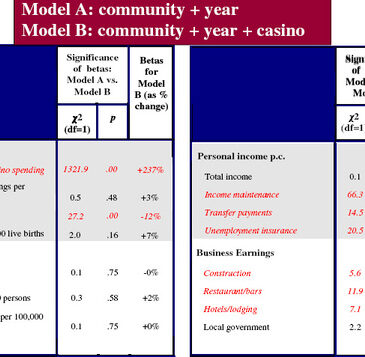Last week, the WAGER discussed some of the recommendations made by the National Gambling Impact Study Commission (NGISC); two weeks ago the topic was prevalence estimates presented in the Commission’s final report. But the primary purpose of the Commission, as its name implies, was to investigate "the social and economic implications of gambling in the United States." This week, the WAGER focuses on this purpose.
The costs and benefits of gambling are difficult topics for investigation. How can social and economic impact be operationalized and measured? Can such costs and benefits be quantified in dollars? Are we gauging the impact on individuals, on the local economy, or on the government? While one can state with precision the number of jobs created by the introduction of a casino to a local economy, how can we measure the change in an individual’s quality of life? There may be no definitive answers to these questions. To tackle this issue, the NGISC contracted with the National Opinion Research Center (NORC) at the University of Chicago. While the NGISC’s final report includes only a brief synopsis of NORC’s social/economic impact analysis, NORC’s own final report is considerably more detailed. The data presented below is from the latter document.
In addition to presenting a series of community case studies illustrating the impact of gambling, NORC engaged statistical analysis to quantify possible implications for crime, bankruptcy, employment, and other common measures . It should be noted that this analysis considers casino gambling only. NORC ran a regression based on a dataset that includes common social and economic indicators for 100 communities. Data was available for the years 1980, when only five of the communities were within 50 miles of casino gambling venues, to 1997, when 45 communities had such gambling venues nearby. NORC’s methodology is considerably more complex than can be presented here, and Appendix B of their final report should be consulted for further details. The table at left presents selected results from the analysis; these results are explained and interpreted below.

Source: National Opinion Research Center. (1999) Gambling impact and behavior study. Chicago: Author.
The WAGER is funded, in part, by the National Center for Responsible Gaming, the Massachusetts Department of Public Health, the Andrews Foundation, the Addiction Technology Transfer Center of New England, the Substance Abuse and Mental Health Administration Services, and the Center for Substance Abuse Treatment.




